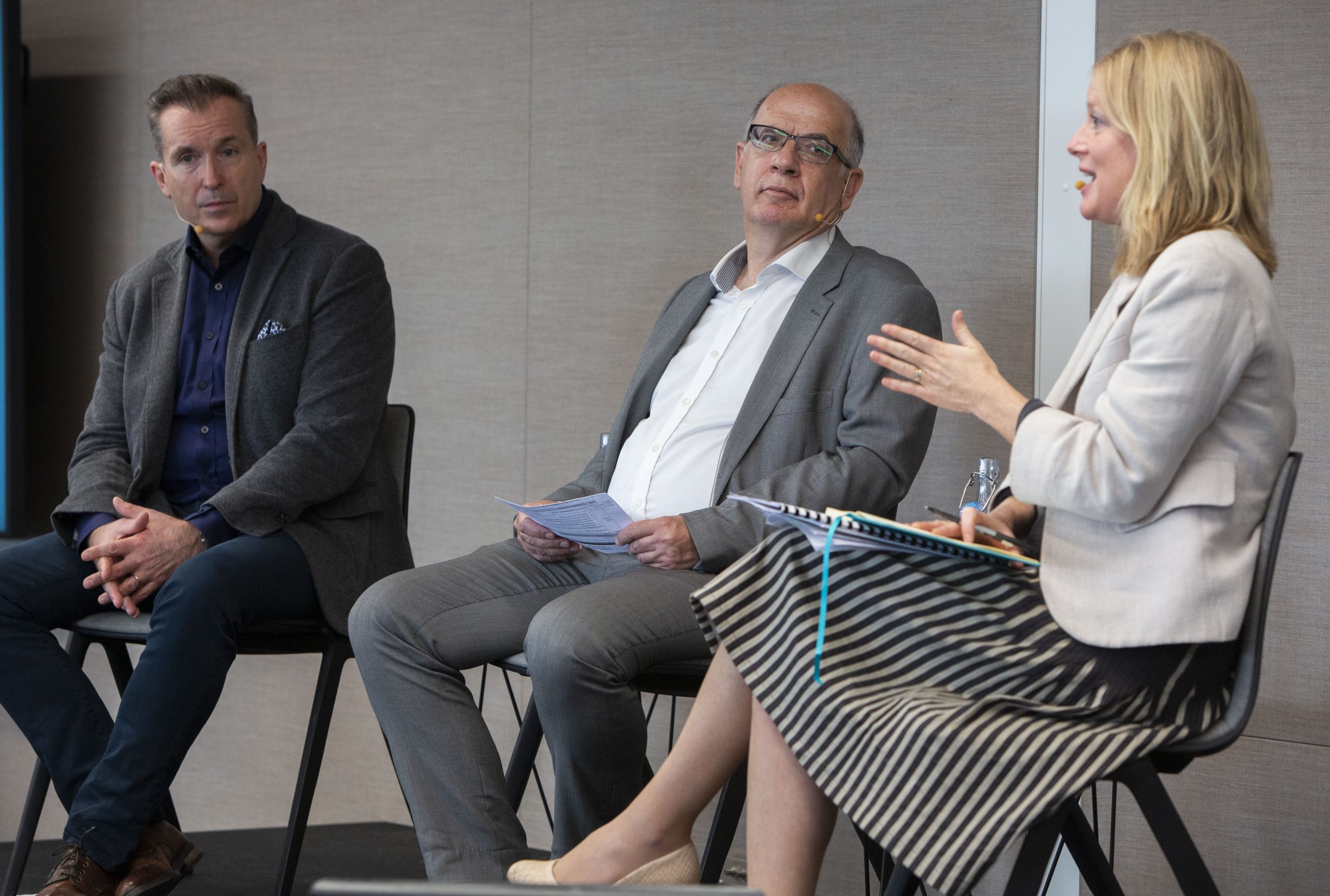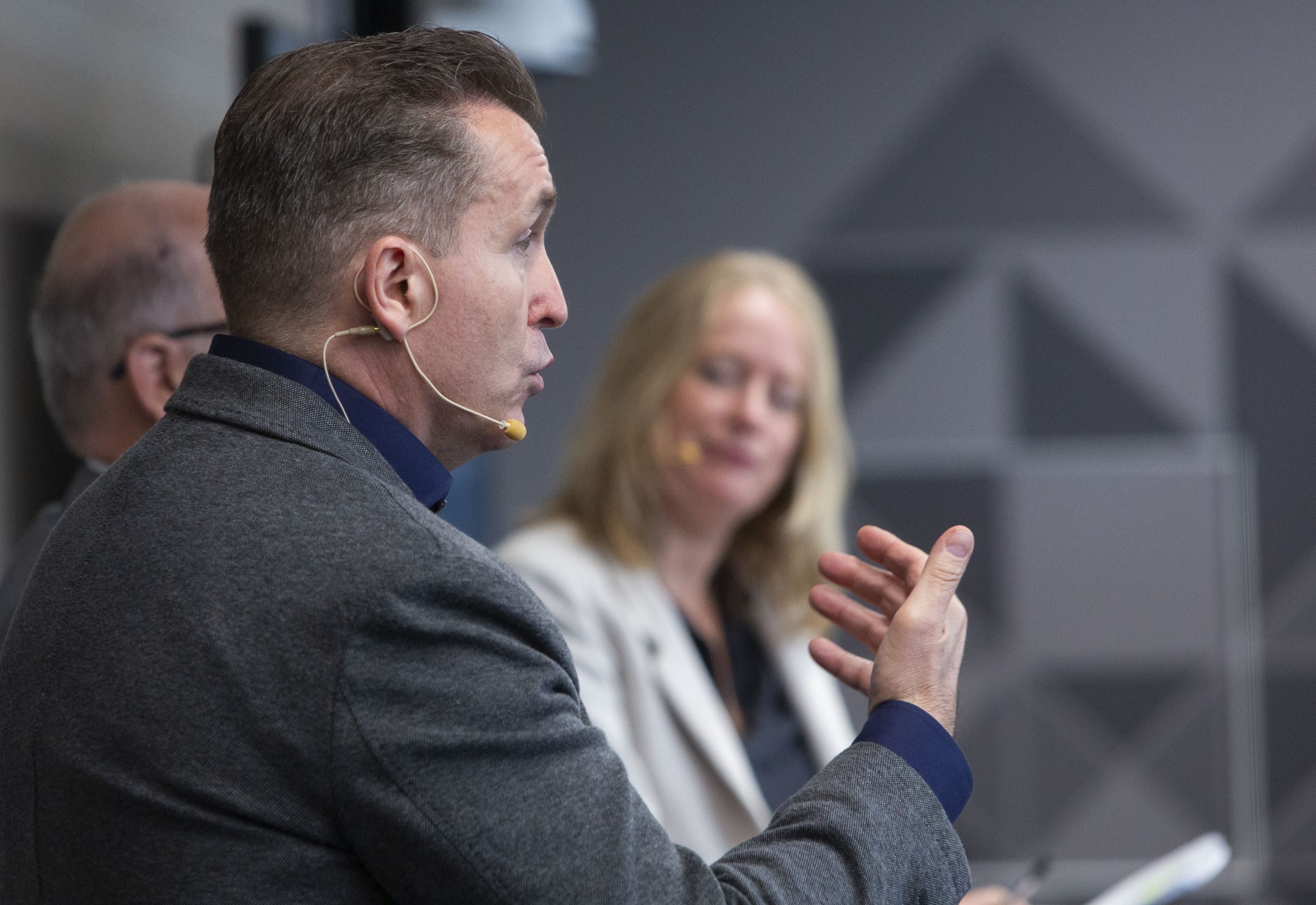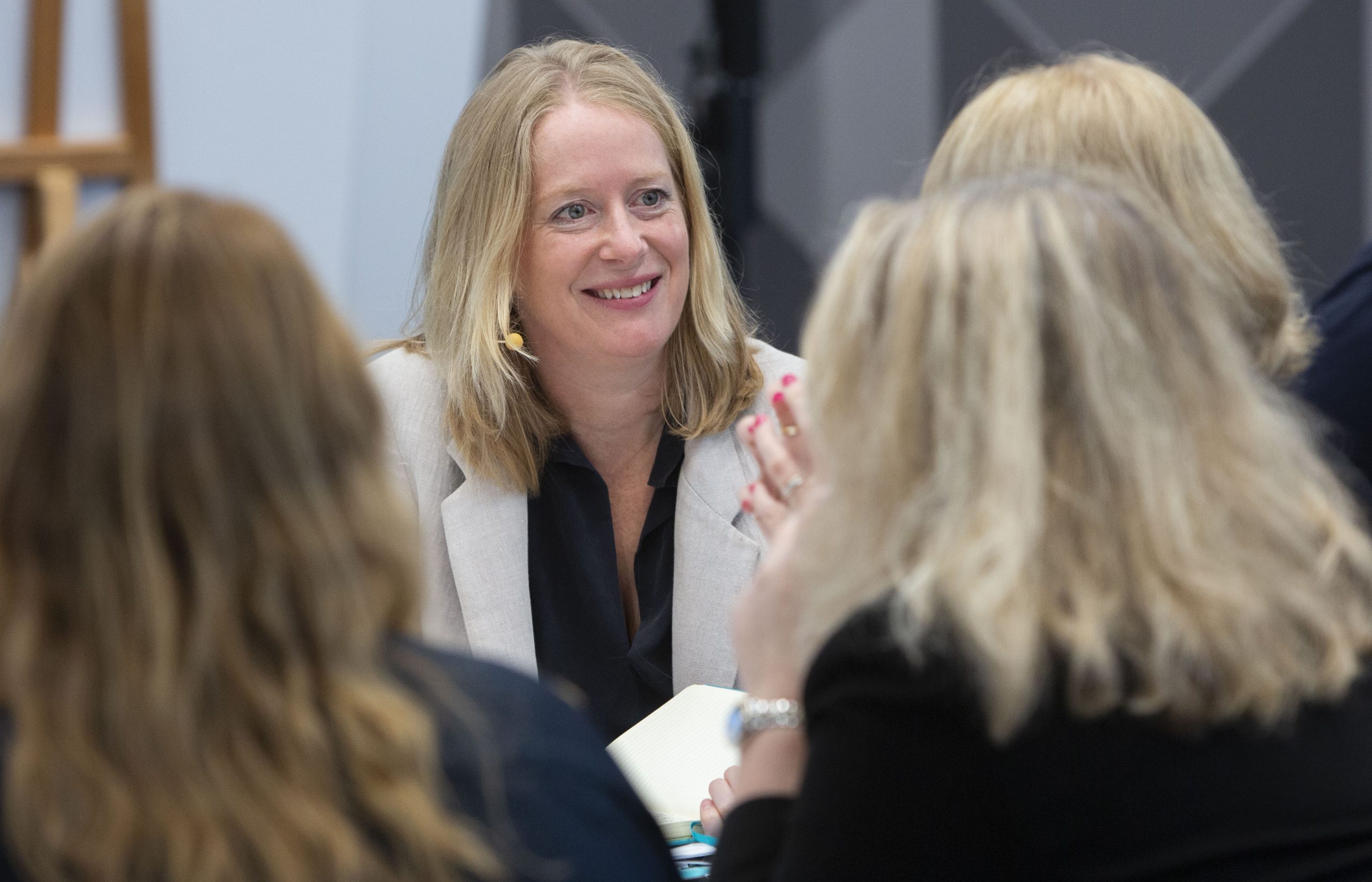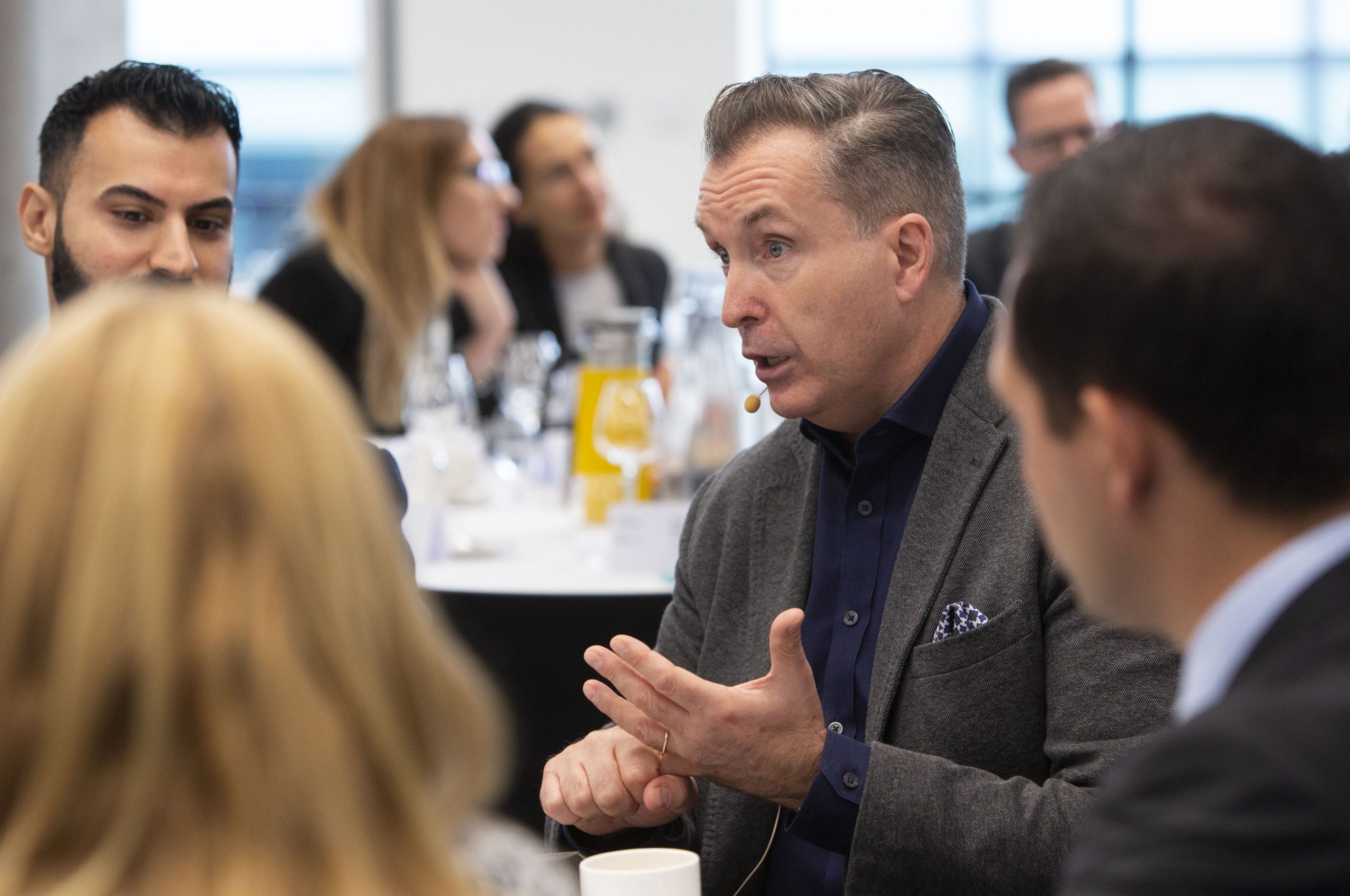AI and HR: the role of humans in an automated workplace
On the 24th September an audience of business leaders and decision makers in the HR sector convened at Bracken House, the home of the Financial Times, to explore the role of humans in an automated workplace.
The morning began with a panel discussion between experts in HR business practice and policy, followed by audience engagement.
On stage were:
- Michael Skapinker, Contributing Editor and Columnist, Financial Times, and Executive Editor, Headspring
- Gary Kildare, Chief HR Officer Europe, IBM Corporation
- Anna Thomas, Co-founder and Director, Institute for the Future of Work

Many of the points raised in the session echoed findings from Headspring’s AI on the Horizon paper published earlier this year. However, while that research aimed to unearth the attitudinal patterns towards AI prevalent among business professionals, conversations at the HR Forum centred on understanding the potential conflicts and opportunities awaiting us in the era of AI.

Key observations included:
AI and humans, not AI vs. humans
Part of the challenge in understanding the potential of AI in the workplace lies in positioning the issue correctly. Fuelled by expectations of human job losses to machines, many of the narratives around AI assume that it includes a latent threat that needs to be kept under control. Reframing the concept, perhaps as Augmented Intelligence instead of Artificial Intelligence, highlights the facilitative role (helping people do their jobs better rather than simply replacing them) that AI is more likely to play in the future.
Algorithms, awareness and AI
AI is not self-reflective, it does not have the ability to spot its own biases in action. Though this is hard enough for humans to do, we at least have the capacity for awareness needed to combat bias and prejudice. This is critical in managing the way algorithms are employed in the management of business resources, especially people. AI-driven recruitment processes, for example, can be skewed by the biases that are unconsciously programmed into them by their creators. There is a growing need for transparency around algorithms that can have a profound impact on all stakeholders, including employees and customers.


No more dull, dirty or dangerous
“When the robots take over…” is the stereotypical warning cry about the AI age, but seen more positively this is exactly what we’re hoping for. AI should result in machines taking responsibility for most of the ‘dull, dirty or dangerous’ jobs that are least attractive to humans. In principle, this should free those humans to use their intelligence and creativity in service of innovation and collaboration.
The need for continuous learning
Because AI will change skills supply and demand, individuals will need to take more accountability for personal development, The half-life of skills will continue shortening as machines automate more and more tasks, leaving humans with a choice between redundancy and self-improvement. To stay relevant and useful, people will need to commit to continuous learning. The companies that actively support employees in doing so will attract and retain the best talent.